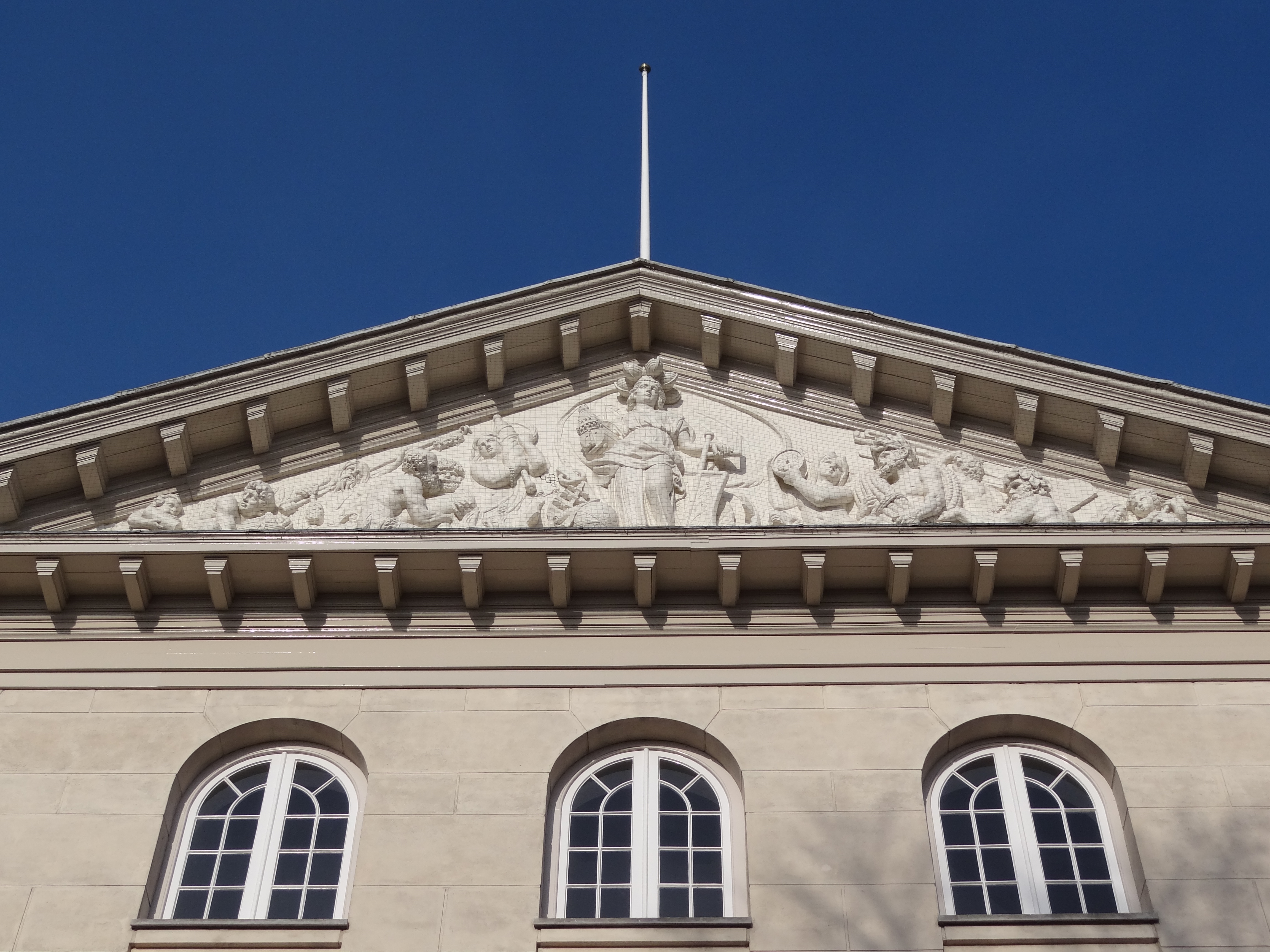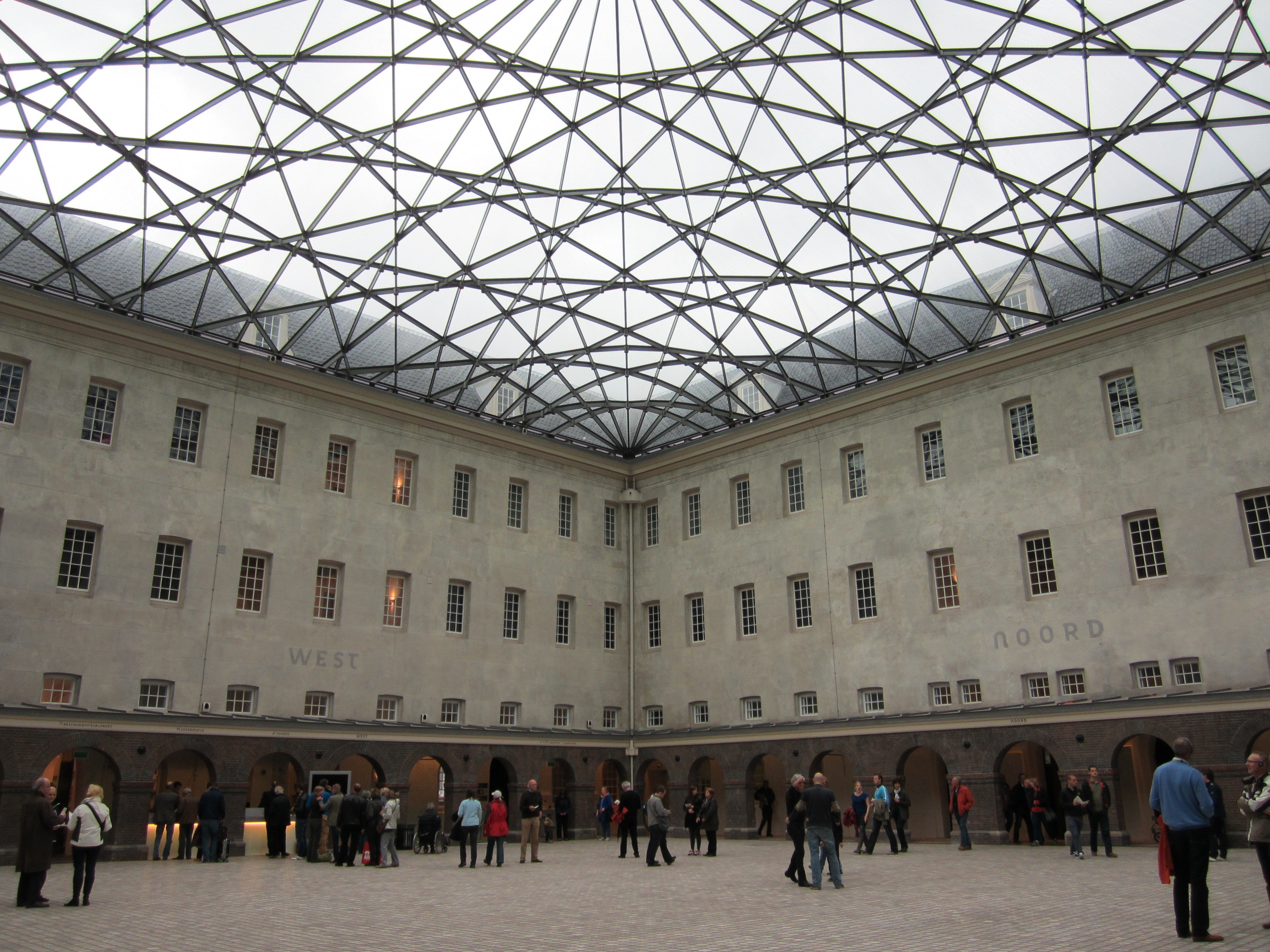's Lands Zeemagazijn on:
[Wikipedia]
[Google]
[Amazon]


 s Lands Zeemagazijn ("National Sea Arsenal") is a 17th-century building in the
s Lands Zeemagazijn ("National Sea Arsenal") is a 17th-century building in the

Oosterdok
The Oosterdok ('Eastern Dock') is a former Dock (maritime), wet dock in Amsterdam. It was created in 1831–1832 by constructing the Oosterdoksdam and the Oosterdoksluis, forming a reliable deep port closed off from the tidal IJ (Amsterdam), IJ.
...
near Kattenburgerplein in Amsterdam
Amsterdam ( , ; ; ) is the capital of the Netherlands, capital and Municipalities of the Netherlands, largest city of the Kingdom of the Netherlands. It has a population of 933,680 in June 2024 within the city proper, 1,457,018 in the City Re ...
, the Netherlands
, Terminology of the Low Countries, informally Holland, is a country in Northwestern Europe, with Caribbean Netherlands, overseas territories in the Caribbean. It is the largest of the four constituent countries of the Kingdom of the Nether ...
, which served as arsenal
An arsenal is a place where arms and ammunition are made, maintained and repaired, stored, or issued, in any combination, whether privately or publicly owned. Arsenal and armoury (British English) or armory (American English) are mostly ...
of the Admiralty of Amsterdam
The Admiralty of Amsterdam was the largest of the five Dutch admiralties at the time of the Dutch Republic. The administration of the various admiralties was strongly influenced by provincial interests. The territory for which Amsterdam ...
. Designed by Daniël Stalpaert
Daniël Stalpaert or Daniel Stalpert (1615, in Amsterdam – buried 3 December 1676, in Amsterdam), was a Dutch architect, painter, town carpenter, print artist and draftsman. He was the first city architect in Amsterdam, a position that wou ...
and constructed in 1655/1656, it is an example of Dutch Baroque architecture
Dutch Baroque architecture is a variety of Baroque architecture that flourished in the Dutch Republic and its colonies during the Dutch Golden Age of the 17th century. (Dutch painting during the period is covered by Dutch Golden Age painting).
...
. Since 1973, the building has housed the National Maritime Museum
The National Maritime Museum (NMM) is a maritime museum in Greenwich, London. It is part of Royal Museums Greenwich, a network of museums in the Maritime Greenwich World Heritage Site. Like other publicly funded national museums in the Unit ...
.
Admiralty
In 1650, the government of Amsterdam decided to build three islands on the eastern edge of the city. The wharf for the navy was to be placed on the westernmost island, Kattenburg. A few years later this became the building site of the arsenal. Construction started in 1655 after the Dutch lost theFirst Anglo-Dutch War
The First Anglo-Dutch War, or First Dutch War, was a naval conflict between the Commonwealth of England and the Dutch Republic. Largely caused by disputes over trade, it began with English attacks on Dutch merchant shipping, but expanded to vast ...
and there was a dire need to professionalize the navy in order to protect the merchant fleet.
The foundation of the building consists of 2300 wooden piles from Oslo
Oslo ( or ; ) is the capital and most populous city of Norway. It constitutes both a county and a municipality. The municipality of Oslo had a population of in 2022, while the city's greater urban area had a population of 1,064,235 in 2022 ...
, and the building itself is constructed entirely out of brick. Two years after its completion, in 1658, Joost van den Vondel
Joost van den Vondel (; 17 November 1587 – 5 February 1679) was a Dutch playwright, poet, literary translator and writer. He is generally regarded as the greatest writer in the Dutch language as well as an important figure in the history of Wes ...
dedicated a poem to the ''Zeemagazijn''.
During the first half of the eighteenth century, the admiralty noticed that the building was slowly sinking into the ground, a common problem with building projects in Amsterdam. Some construction errors during the laying of the foundation plus the weight of the building and the peat soil
Peat is an accumulation of partially decayed vegetation or organic matter. It is unique to natural areas called peatlands, bogs, mires, moors, or muskegs. ''Sphagnum'' moss, also called peat moss, is one of the most common components in pea ...
of Amsterdam combined in a hazardous situation. To stop this from happening, buttresses
A buttress is an architectural structure built against or projecting from a wall which serves to support or reinforce the wall. Buttresses are fairly common on more ancient (typically Gothic) buildings, as a means of providing support to act a ...
were added to the base of the building and an avant-corps
An ''avant-corps'' ( or , plural , , ), a French term literally meaning "fore-body", is a part of a building, such as a porch or pavilion, that juts out from the ''corps de logis'', often taller than other parts of the building.Curl, James Stev ...
was constructed on four sides of the building.
In 1791, a great fire broke out and charred the entire building. Instead of demolishing it and constructing a new arsenal in its place, the decision was made to plaster the building to imitate sandstone, creating the distinctive white look it has today. After the French invasion in 1795, the Dutch Admiralty was disbanded and a national navy was formed; the function of the arsenal changed as well. It no longer stored cannons, ropes and gunpowder but clothing and food. After the French left, the building was given to the newly formed Dutch navy and stayed in the navy's control until 1973.
Dutch Maritime Museum
In 1972, it was announced that the building would become the location of the Nederlands Scheepvaartmuseum (English: Dutch Maritime Museum), as the navy saw no more use for the building, and the Maritime Museum needed a larger building to display their various objects. After moving the collection of the museum from theCornelis Schuytstraat
Cornelis is a Dutch form of the male given name Cornelius. Some common shortened versions of Cornelis in Dutch are Cees, Cor, Corné, Corneel, Crelis, Kees, Neel and Nelis.
Cornelis (Kees) and Johannes (Jan) used to be the most common given na ...
in the southern part of Amsterdam to the Zeemagazijn, the museum was officially opened by Princess Beatrix on April 13, 1973.
A new renovation project was planned to take place from 2007 to 2011. On October 1, the Maritime Museum was reopened by Queen Beatrix
Beatrix (Beatrix Wilhelmina Armgard, ; born 31 January 1938) is a member of the Dutch royal house who reigned as Queen of the Netherlands from 30 April 1980 until her abdication in 2013.
Beatrix was born during the reign of her maternal gr ...
. New additions to the building are the glass and steel roof, designed by Laurent Ney and based upon the lines of a compass on sea charts. In total it weighs 200,000 kilos (160,000 kilos steel and 40,000 kilos glass). Because the building is slanted (an effect from the sinking in the 18th century), every piece of glass had to be cut individually.
References
External links
{{DEFAULTSORT:Lands Zeemagazijn Navy of the Dutch Republic Rijksmonuments in Amsterdam Arsenals Buildings of the Dutch Golden Age Baroque architecture in the Netherlands